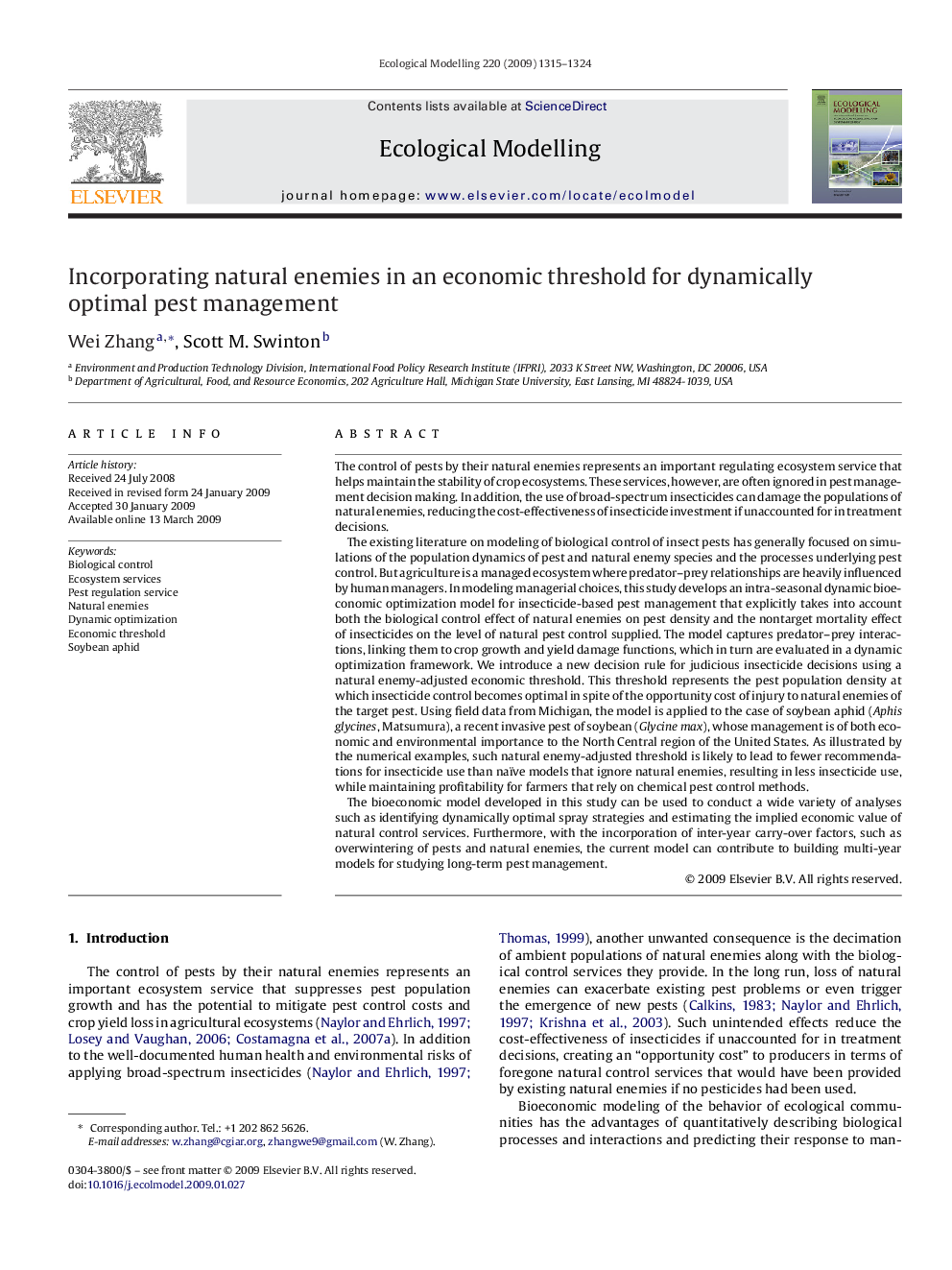| کد مقاله | کد نشریه | سال انتشار | مقاله انگلیسی | نسخه تمام متن |
|---|---|---|---|---|
| 4378111 | 1617524 | 2009 | 10 صفحه PDF | دانلود رایگان |

The control of pests by their natural enemies represents an important regulating ecosystem service that helps maintain the stability of crop ecosystems. These services, however, are often ignored in pest management decision making. In addition, the use of broad-spectrum insecticides can damage the populations of natural enemies, reducing the cost-effectiveness of insecticide investment if unaccounted for in treatment decisions.The existing literature on modeling of biological control of insect pests has generally focused on simulations of the population dynamics of pest and natural enemy species and the processes underlying pest control. But agriculture is a managed ecosystem where predator–prey relationships are heavily influenced by human managers. In modeling managerial choices, this study develops an intra-seasonal dynamic bioeconomic optimization model for insecticide-based pest management that explicitly takes into account both the biological control effect of natural enemies on pest density and the nontarget mortality effect of insecticides on the level of natural pest control supplied. The model captures predator–prey interactions, linking them to crop growth and yield damage functions, which in turn are evaluated in a dynamic optimization framework. We introduce a new decision rule for judicious insecticide decisions using a natural enemy-adjusted economic threshold. This threshold represents the pest population density at which insecticide control becomes optimal in spite of the opportunity cost of injury to natural enemies of the target pest. Using field data from Michigan, the model is applied to the case of soybean aphid (Aphis glycines, Matsumura), a recent invasive pest of soybean (Glycine max), whose management is of both economic and environmental importance to the North Central region of the United States. As illustrated by the numerical examples, such natural enemy-adjusted threshold is likely to lead to fewer recommendations for insecticide use than naïve models that ignore natural enemies, resulting in less insecticide use, while maintaining profitability for farmers that rely on chemical pest control methods.The bioeconomic model developed in this study can be used to conduct a wide variety of analyses such as identifying dynamically optimal spray strategies and estimating the implied economic value of natural control services. Furthermore, with the incorporation of inter-year carry-over factors, such as overwintering of pests and natural enemies, the current model can contribute to building multi-year models for studying long-term pest management.
Journal: Ecological Modelling - Volume 220, Issues 9–10, 17 May 2009, Pages 1315–1324